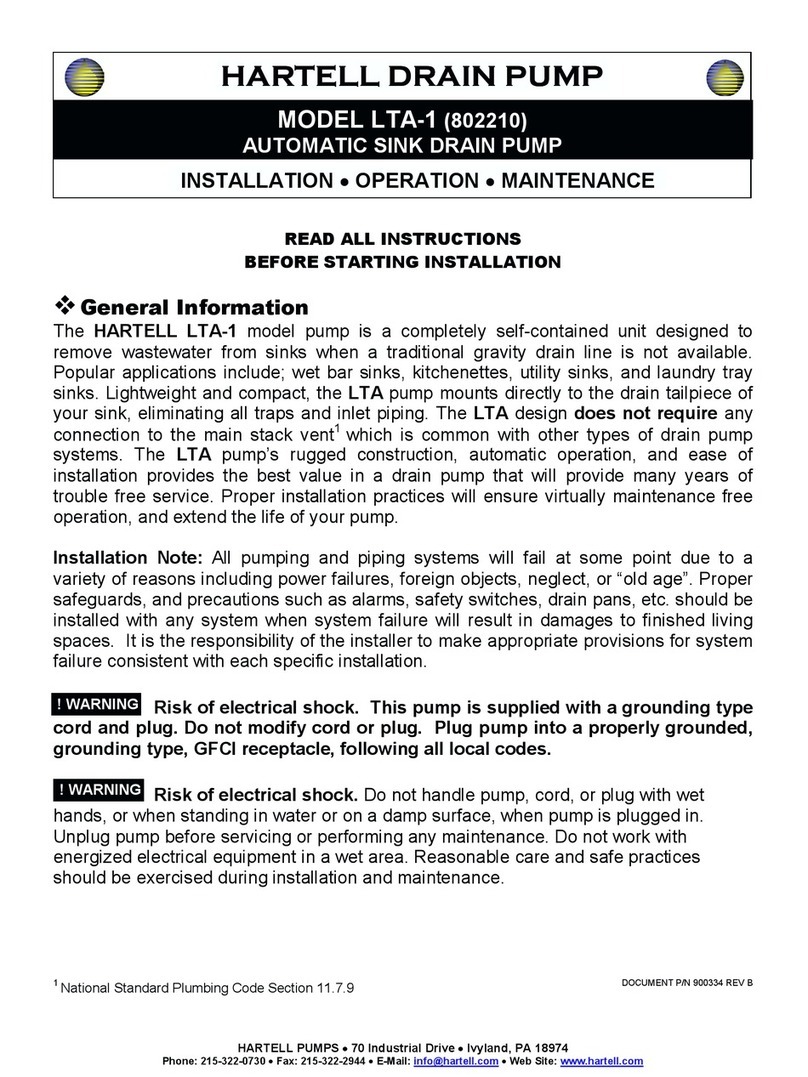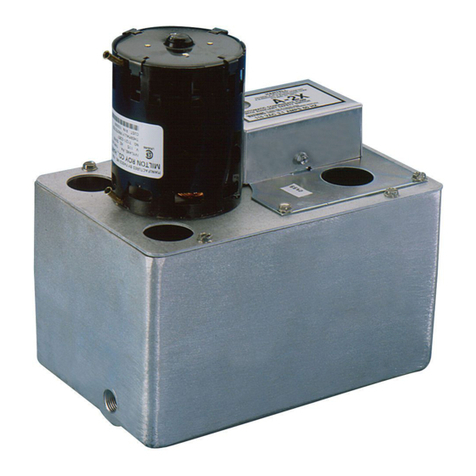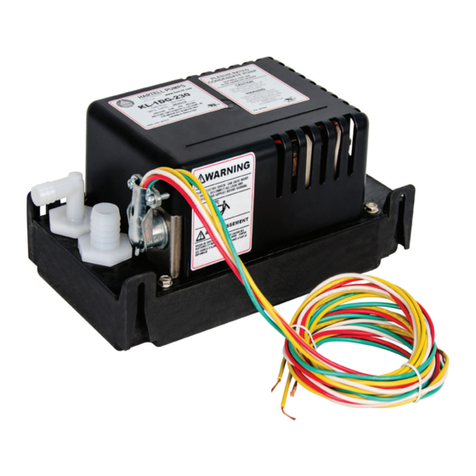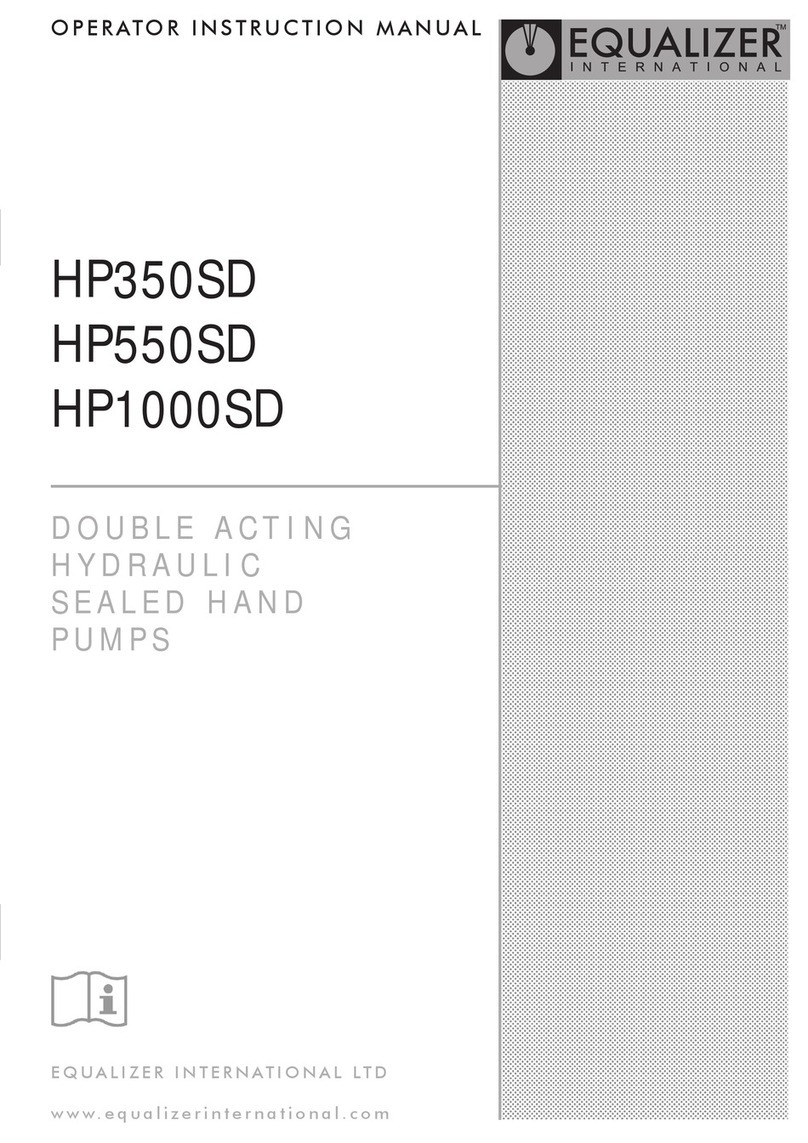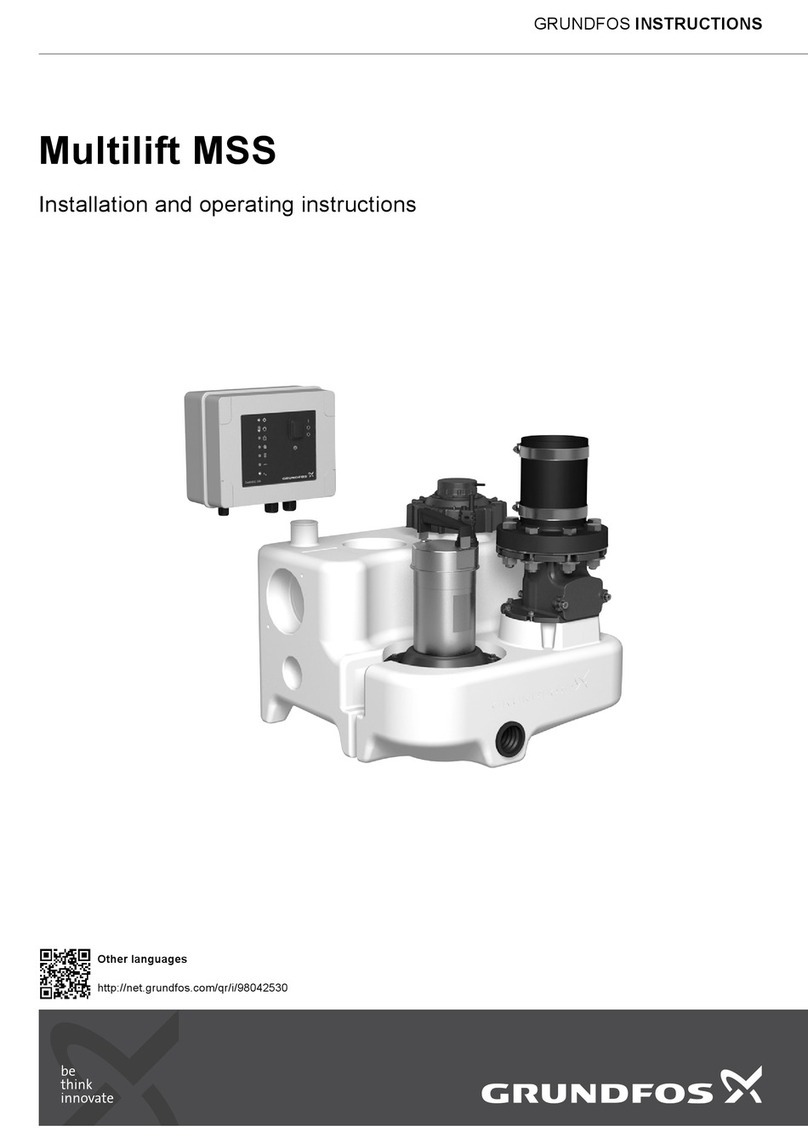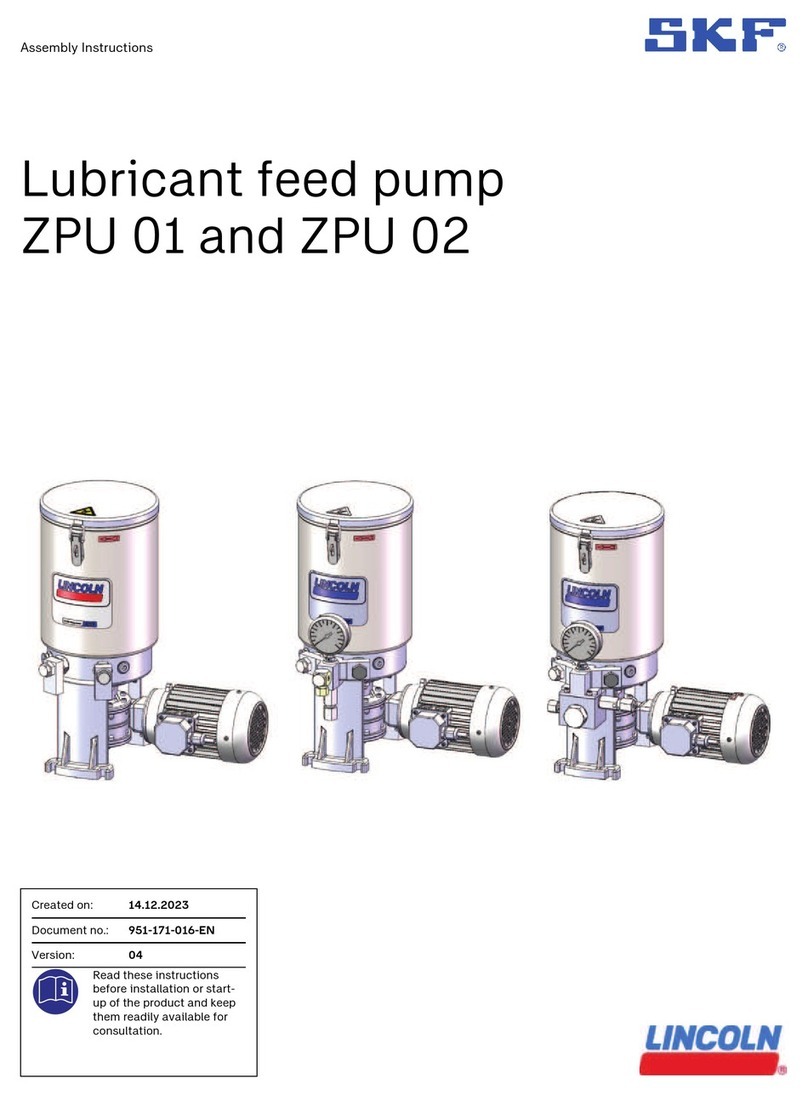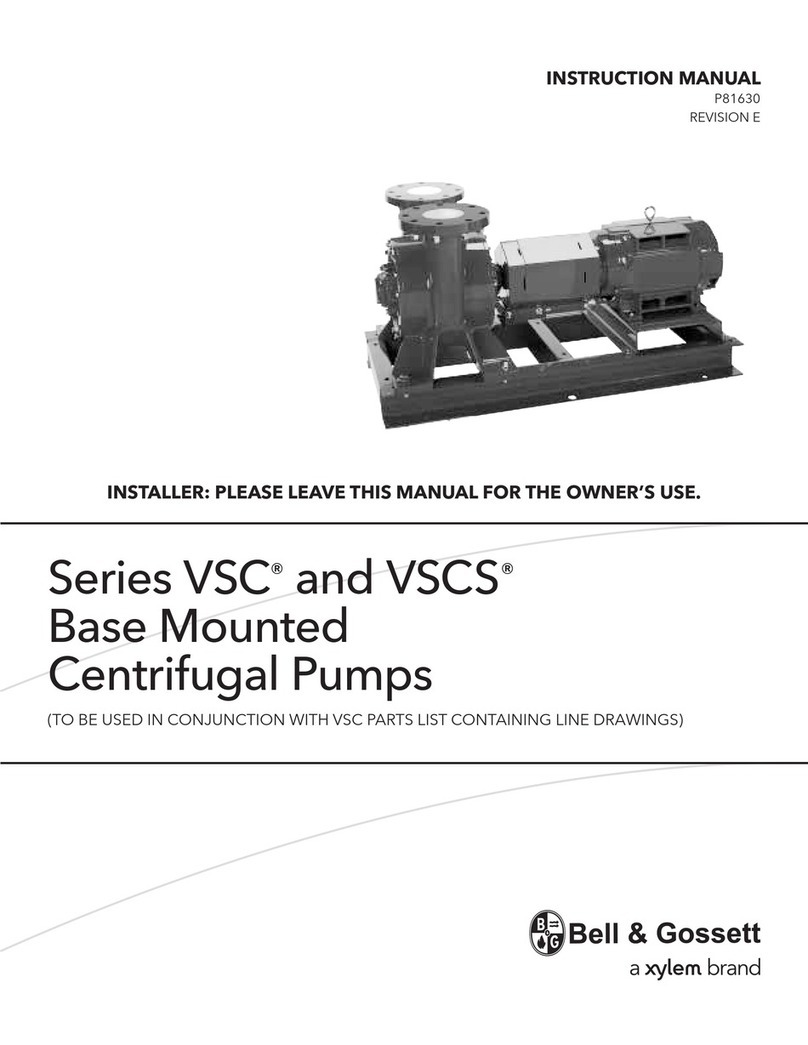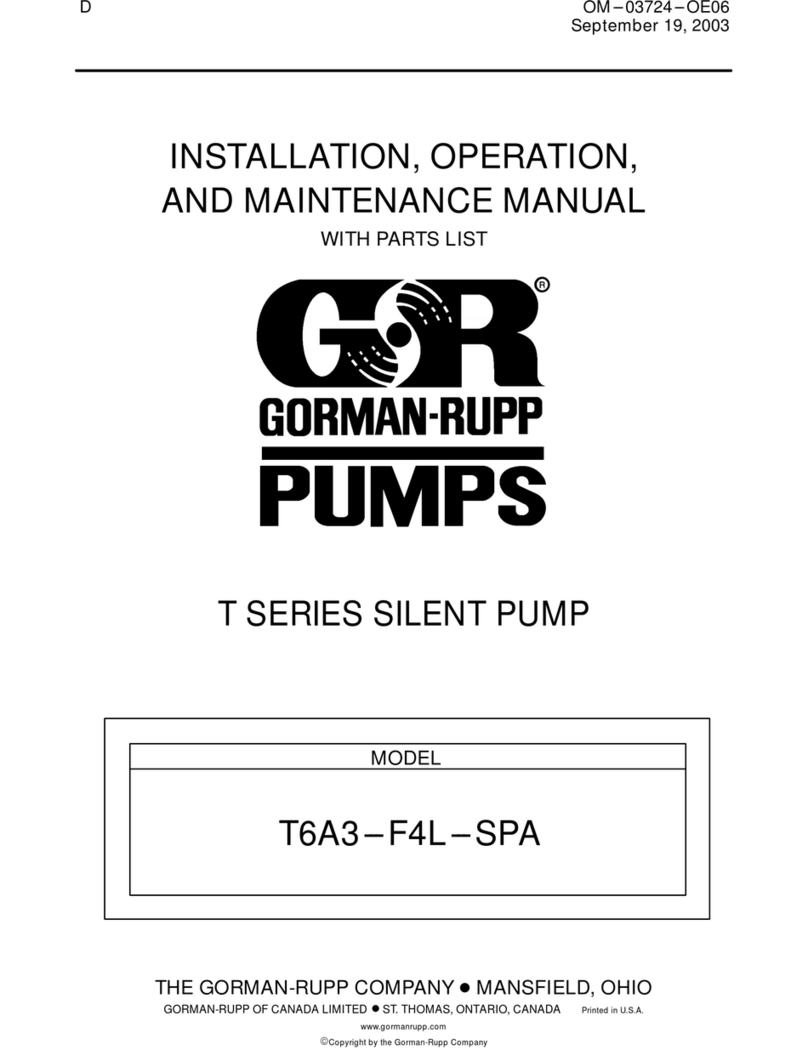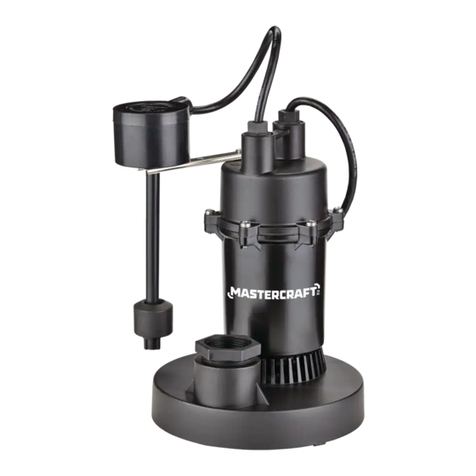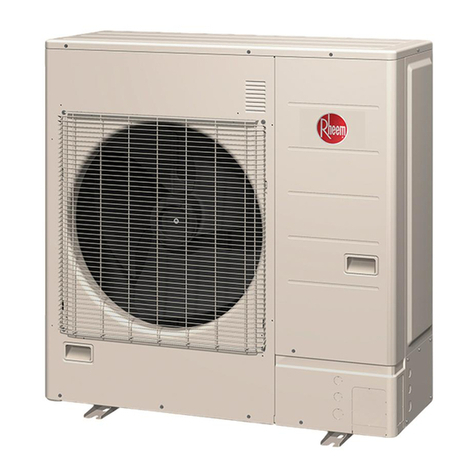Literature # 900334 2019
Pipe dope and other thread sealing compounds
must not be used to aid in the sealing of inlet or
discharge threads. Pipe dope will cause cracking of
plastic parts. Use Teflontape only to aid in thread
sealing. Use of pipe dope will void warranty.
❖Installation
1. Attach pump to sink drain tailpiece as follows:
a) Place fiber gasket over drain threads.
b) Place rubber o-ring over drain.
c) Lift pump and engage inlet threads with the sink drain threads.
Exercise care so that threads are properly aligned. Mis-alignment will
damage threads and may cause leaks.
d) Rotate the pump until tray adapter flange on pump inlet contacts the
gasket. Once contact is made, rotate pump until it is firmly secured to
the drain and the discharge is in the correct position for your
installation.
2. Install discharge piping as shown in Figure 1.
a) 1” piping and valves are recommended; however, 3/4” piping and
valves may be substituted in installations where lift requirements are
less than six (6) feet, or approximately one half of the pump’s
maximum lift.
b) A check valve or back flow preventer (included) is required to
ensure the proper operation of the pump. A soft-seat, swing check
valve is included; however, a ball or spring type check valve may be
used if the force required to open them is no more than 3 feet of lift,
or less than 1 psi. and does not affect the required pump flow.
c) A discharge line shut-off or balancing valve (included) is required
to regulate the discharge flow to match the sink drain flow. This will
minimize cycling of the pump and allow cleaning and servicing of the
check valve without draining the discharge line.
3. Plug pump into a properly grounded, grounding type
receptacle. Follow all local codes. GFIC is recommended.
A strainer must be installed in the sink drain to prevent
debris and foreign objects from entering and becoming
lodged in the pump chamber, preventing proper pump
operation. If used with a washing machine a lint trap or
tube filter should be used on the washing machine
discharge hose.
Sinks will only allow 5-6 gallons-per-minute (GPM) of water
to pass through the drain into the pump. When the pump is
lifting water to a height of 8 feet, the LTA pump will remove
23 GPM. This causes the pump to turn on and off frequently,
or “cycle”. The shut off or balancing valve acts to adjust or
“balance” the discharge flow to match the inlet flow being
let into the pump from the sink and reduces pump cycling.
Adjust pumps as follows to minimize cycling:
4. System check and final adjustment.
a) Turn on faucets or water supply. Pump will turn on
automatically as water collects in the pump. Once the pump has
started, check all piping and connections for leaks.
b) Adjust shut-off valve to minimize pump cycling. Place a
stopper in the sink and allow the water level to build up several
inches above the drain. With the shut off valve fully open
remove the stopper and allow the water to flow into the pump.
Close the shut off valve slowly until the pump runs continuously
while the sink is draining. Check this adjustment by running the
faucets. The pump will cycle at partial water flow but should run
continuously when the faucets are fully open, and the maximum
amount of water is draining from the sink.
c) If the water level in the sink increases with full faucet water
flow, open the balancing valve slightly. Note: Washing
machines will discharge more water than will drain from the sink.
Use faucet water flow only to calibrate pump flow!

